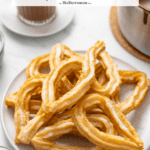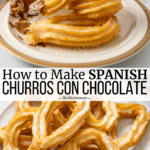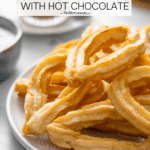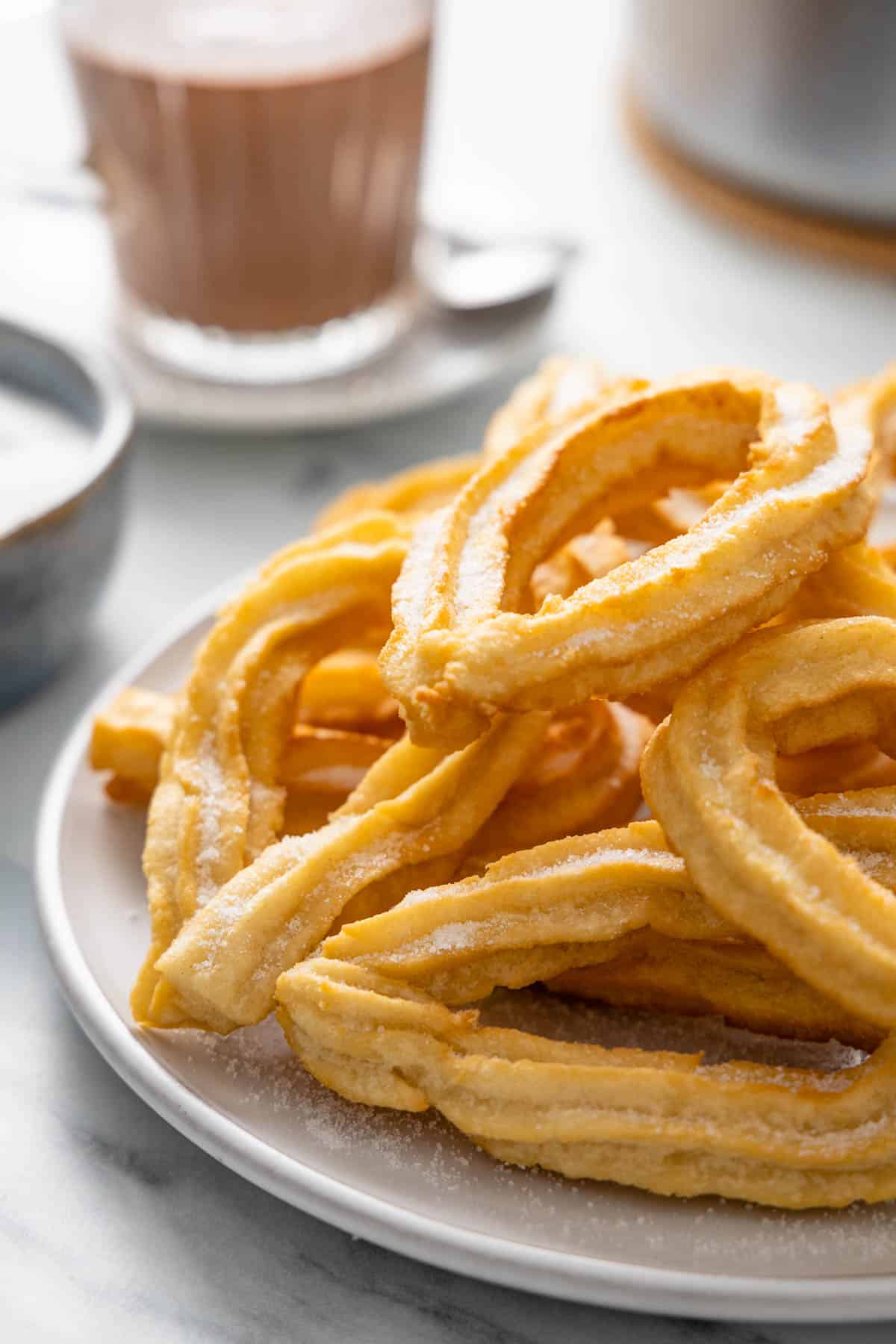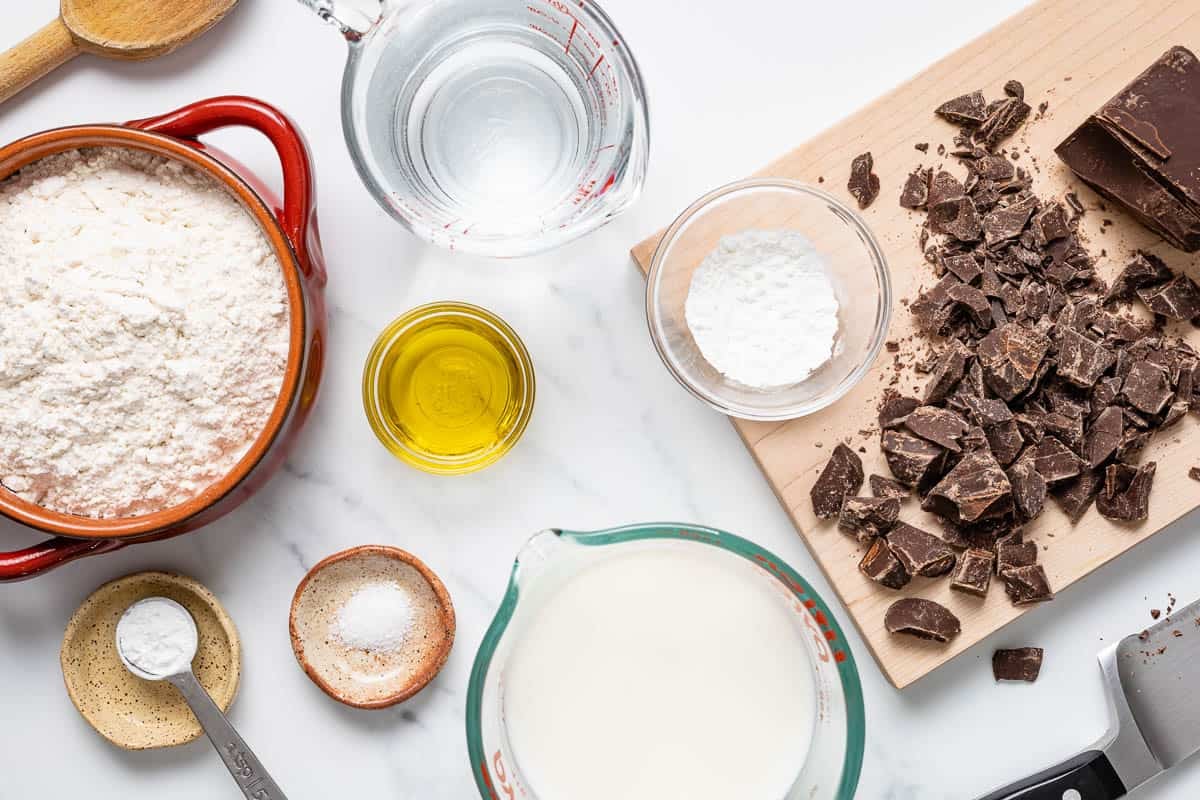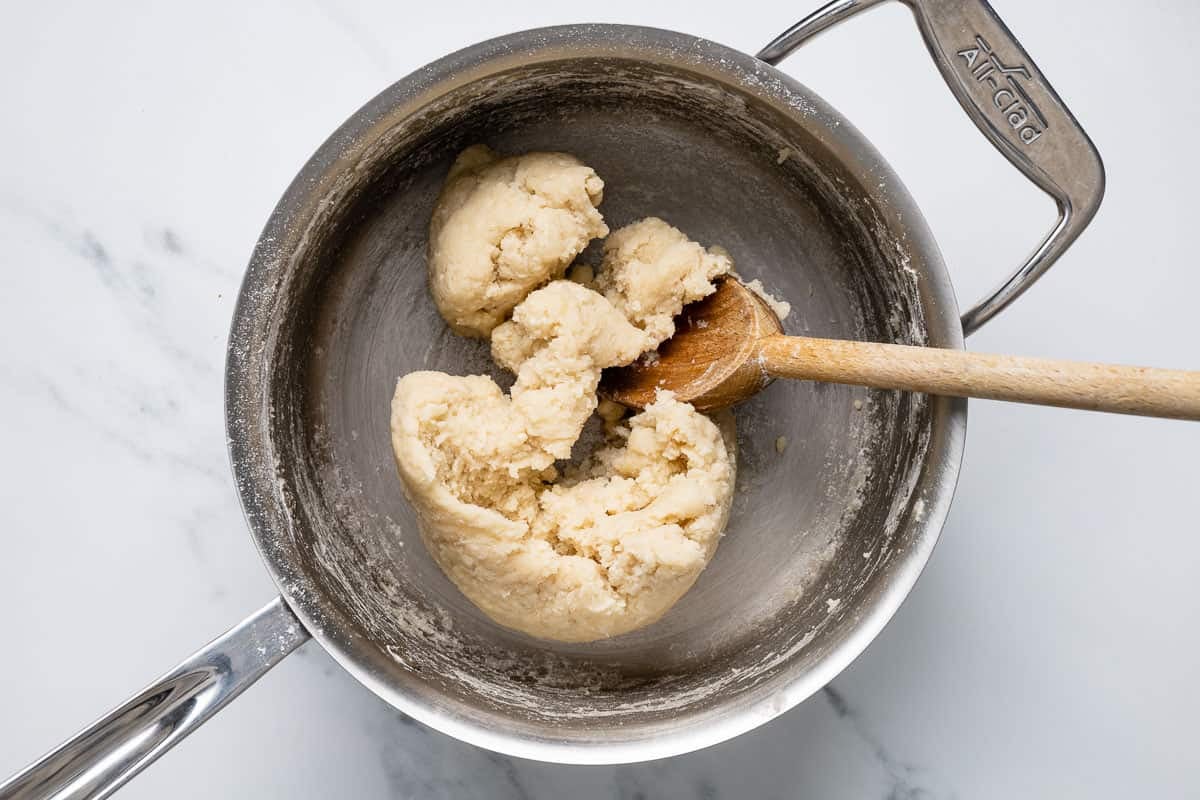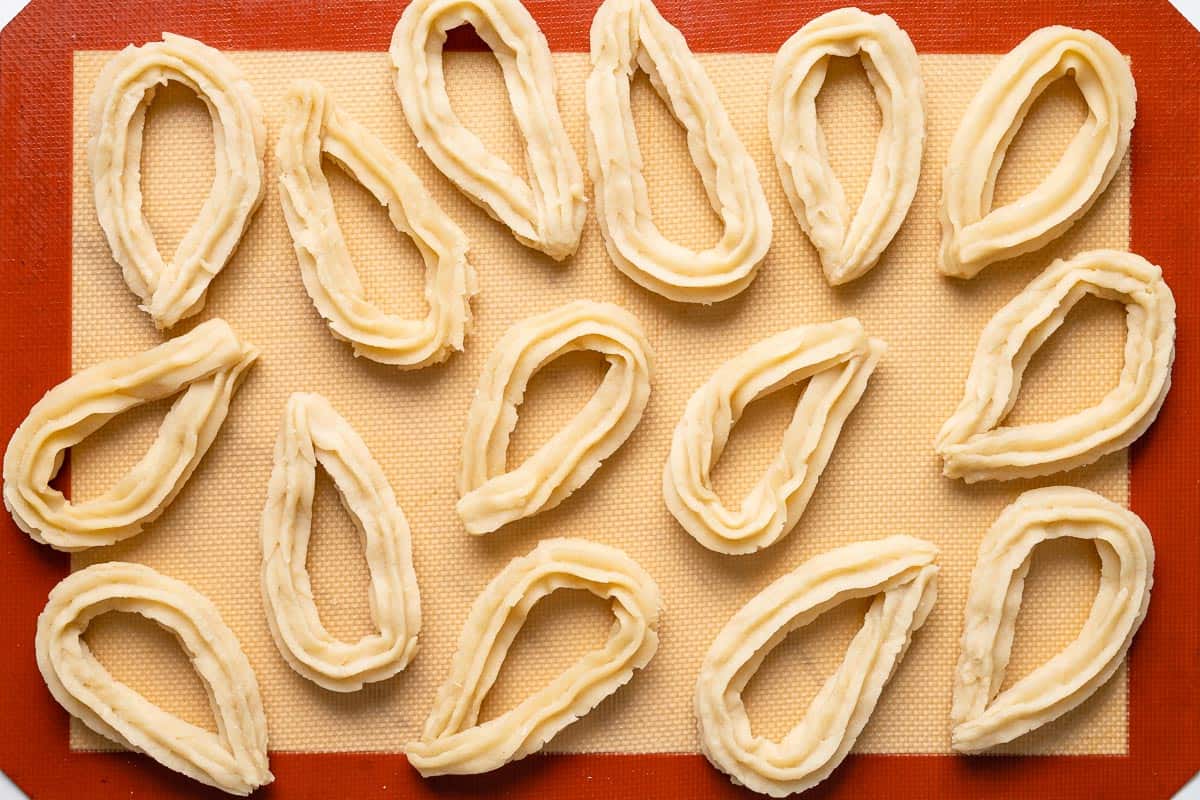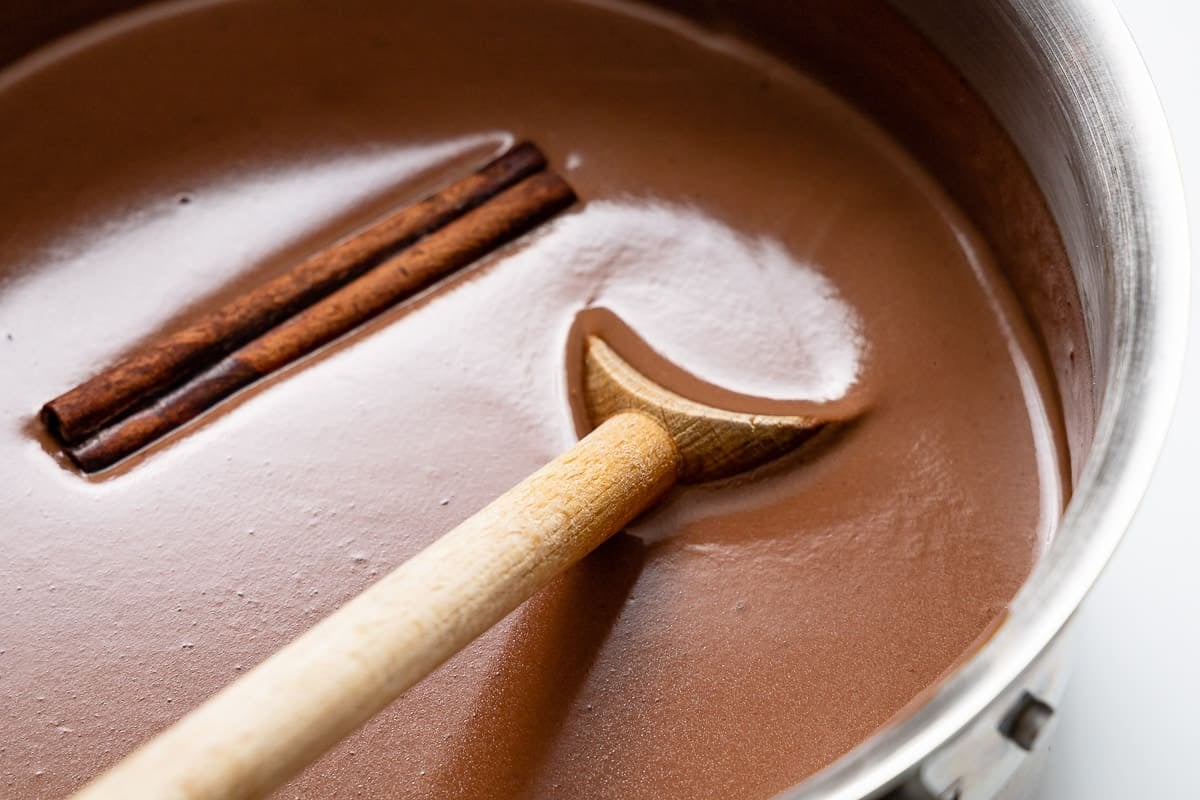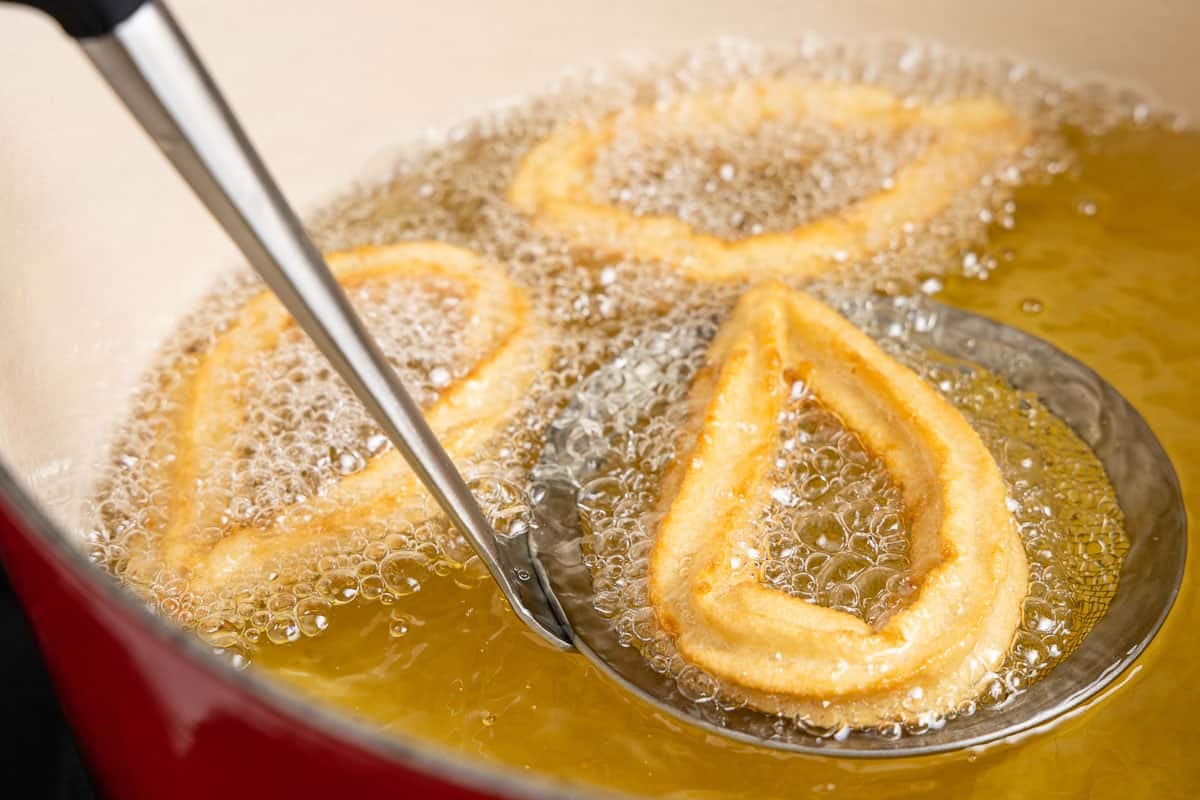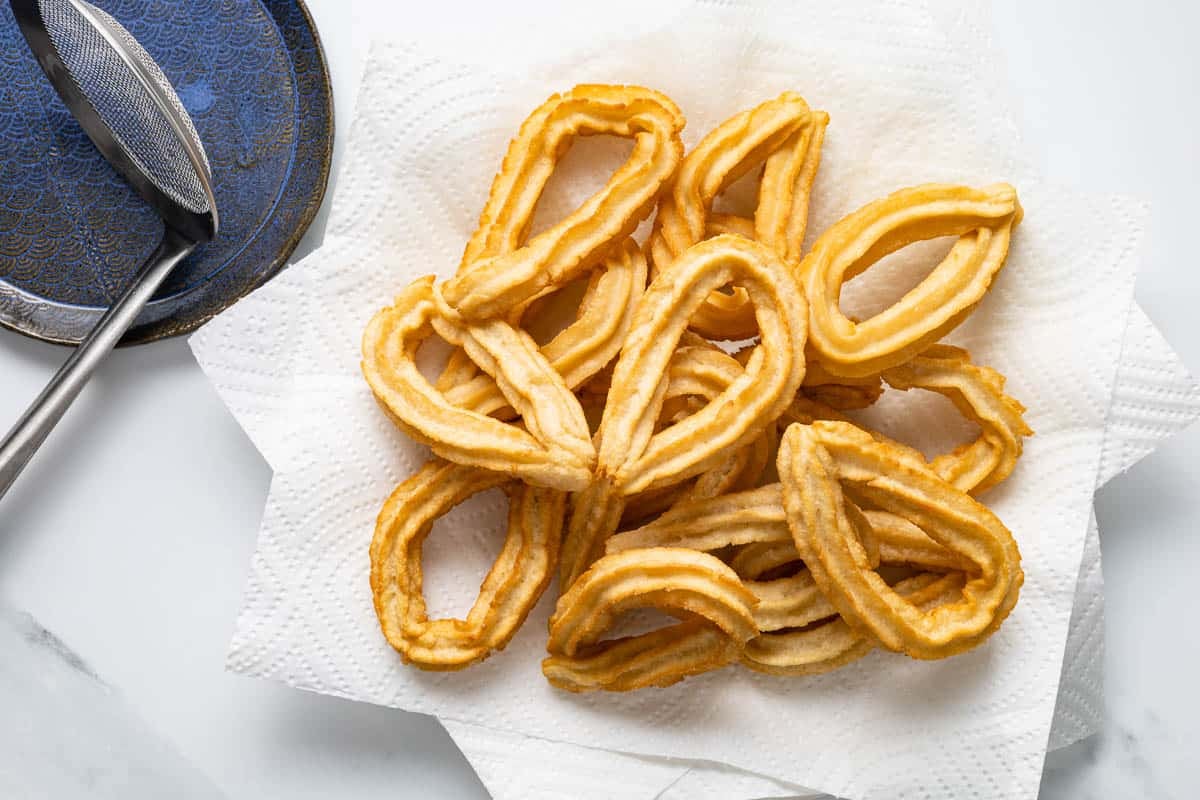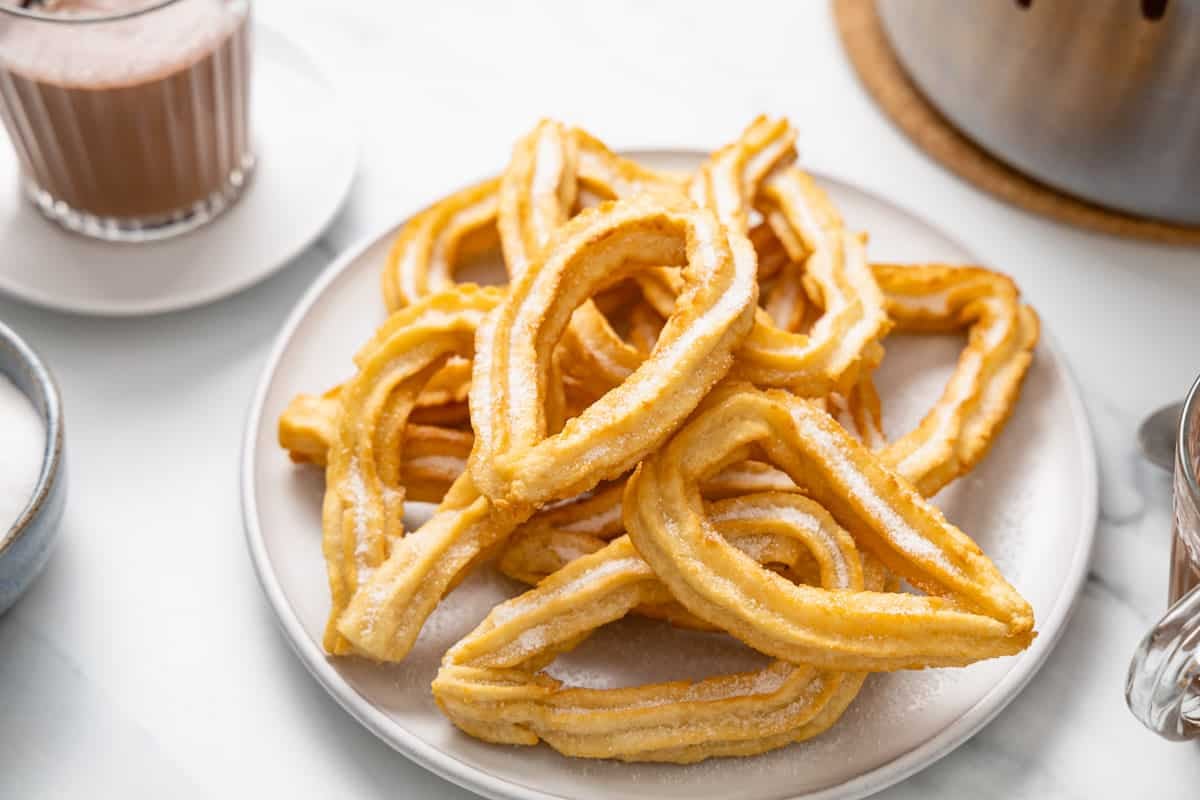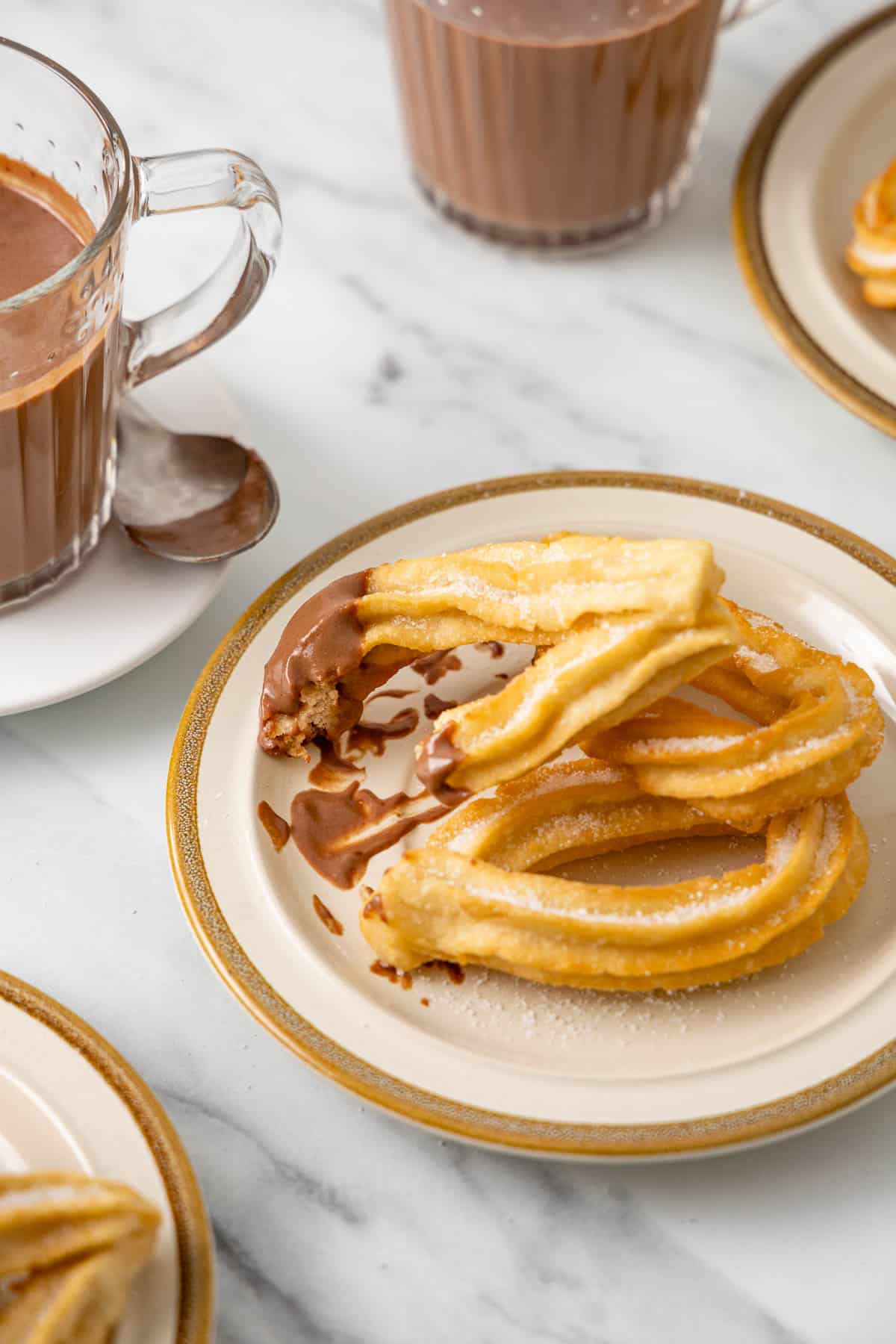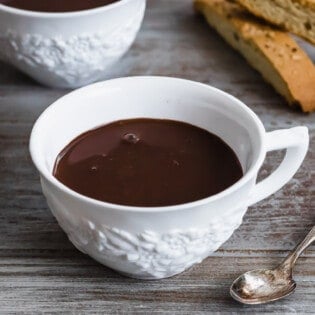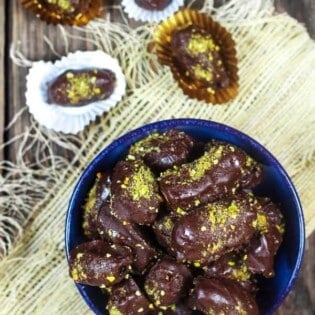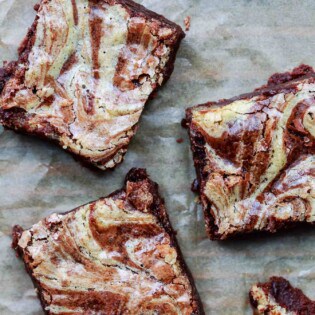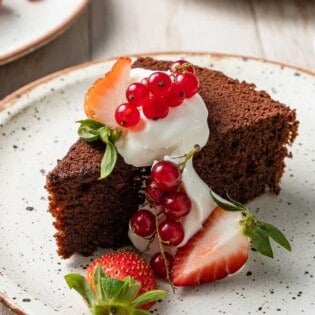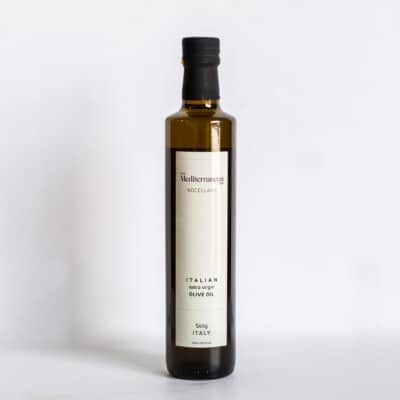I fell in love with churros one chilly January while living in Barcelona. The “granges” on Carrer Petritxol in Barcelona’s Gothic Quarter and San Ginés in Madrid serve endless plates of piping hot, crispy churros and steaming cups of Spanish drinking chocolate for dipping. I often found myself there in need of a warm pick-me-up with friends in the afternoons after class or even in the early mornings after a night of dancing at the discotecas. When I wasn’t going for savory treats like Spanish Beef Empanadillas, I would answer my sweet tooth’s call with these warm churros. While my dancing days aren’t quite as frequent as they once were, my churro eating game is alive and well! It’s easy to make churros at home and such a welcome treat for friends and family. Once you’ve made, then shaped and fried the dough, roll it in sugar and make the dipping chocolate. In no time, your Spanish dessert is ready. Serve churros as part of a Spanish feast with Chorizo Pasta, Patatas Bravas, and Gambas Al Ajillo. No discoteca required.
Who Created the Churro?
Spain is well-known for its sun-clad beaches and mouthwateringly fresh food. And while my years in Barcelona and Madrid were full of fun in the sun, no one mentioned the cold that emanates from stone and plaster walls during winter in an apartment building hundreds of years old. It was not long before I discovered one of the Spanish tricks to staying content and cozy in the off-season: churros con chocolate. Churros have been around for so long the exact origin seems to be lost. There are theories that they’re based on a technique learned by the Portuguese in China, but there are also records of a similar fritter dating back to Roman times. We do know, however, that churros traveled with the Spanish and Portuguese to Central and South America where they evolved over time becoming popular in other Spanish speaking countries. As churros traveled the globe the dough, filling, toppings, and sauces have evolved. In some countries the churros dough is richer or filled. Sometimes they also arrive coated in a mixture of cinnamon and sugar and served alongside dulce de leche. When it comes to churros, I’m an equal opportunity consumer, however, churros con chocolate is a personal favorite.
Tools for Shaping Churros
When it comes to shaping churros you should know, it can be a bit of a workout. After much testing, my favorite method, and easiest on your muscles, is with a churrera or a cookie press with a churro or star disk. If you don’t want to spring for another kitchen gadget, a heavy-duty cloth piping bag fitted with a large open star tip will work just fine. I wouldn’t recommend using disposable plastic piping bags, however, as they tend to rip after shaping a couple of churros. The best thing to do is experiment and find the best method and tool for you.
Ingredients Needed to Make Churros
This churro recipe uses ingredients you likely already have on hand. If not, they’re all easy to find at your local grocery store. When it comes to shopping I do have one request: go ahead and splurge on some good chocolate! It’s totally worth it in this recipe and you’ll be glad you did!
All-purpose flour: Forms the base of the dough. Baking powder: Helps lighten the interior of the churros, giving them a fluffier texture. Water: Provides the liquid to form the dough. Using water as opposed to milk makes the outside of the churros crunchier. Extra-virgin olive oil: Gives a light touch of flavor and richness. I like to use a Spanish EVOO, like our Hojiblanca from the Southern Andalusian region of Estepa. Kosher salt: A flavor enhancer to prevent a bland pastry. Frying oil: Use a neutral-flavored oil like canola, sunflower, safflower, or a light olive oil. Sunflower and olive oils are the most traditional. Cornstarch: Used as the thickener for Spanish hot chocolate. It’s thick like a sauce, and has more in common with Italian Hot Chocolate than thinner American hot chocolate. Milk: Whole milk provides just enough richness and creaminess for the hot chocolate. Feel free to substitute with your favorite plant-based milk to make this a vegan dessert recipe. Chocolate: This is the base of the hot chocolate. Use high-quality, 70% cacao chocolate for a deep flavor that isn’t overly sweet.
How to Make Churros
Spanish churros are deep-fried fritters made from a basic dough of flour and boiling water. If you’ve ever made choux pastry then making churros isn’t much of a stretch. To make churros, simply cook the dough on the stovetop. Then, transfer the dough to a sturdy piping bag, churrera if you have one, or a cookie press. When the dough is ready, pipe it into teardrop shapes then fry it. If you prefer, you can keep it simple by piping straight lines instead.
Mix the dry ingredients: In a medium mixing bowl, whisk together 2 cups of flour and 1 teaspoon of baking powder. Set aside by the stove. Boil the wet ingredients: In a medium saucepan set over medium-high heat, bring 1 1/4 cup water, 1 tablespoon extra virgin olive oil, and 1/4 teaspoon salt to a boil. Mix the dough: Once boiling, take the pan off the heat and add the flour mixture all at once. Stir with a wooden spoon until the dough comes together into a rough ball, about 1 minute. The dough is very thick and may require some effort. Shape the dough: When the dough is cool enough to handle but still warm, transfer it into a churrera, or a cookie press, or a sturdy cloth piping bag fitted with a large open star tip (I use a Wilton 1M or Ateco 824). Press strips of dough about 8 inches long onto a silicone mat or parchment paper. Once all the dough is used up, you should get about 16 churros. The dough is very dense and takes a bit of force to press. It is easier to handle while still warm, so work quickly if you can. Fold the dough (optional): Fry the churros as-is, or fold each strip into a teardrop shape, roughly 4 inches tall by 2 inches wide. Cover the shaped churros with plastic wrap or a damp clean tea towel to prevent them from drying out while preparing the hot chocolate. Make the hot chocolate slurry: Dissolve 1 tablespoon of cornstarch in 2 tablespoons of the cold milk in a small bowl. Bring the remaining 1/2 cup plus 6 tablespoons milk, 1 cinnamon stick, and 1 star anise to a boil. Stir occasionally with a wooden spoon to prevent the milk from scorching. Reduce the heat to low, then add the reserved cornstarch mixture. Cook for 2-3 minutes, stirring constantly, until slightly thickened to the consistency of cream. Stir in the chocolate: Add the chopped chocolate and continue stirring until the chocolate has melted completely. Keep the chocolate warm on the lowest burner setting while you fry the churros. Get ready to fry the churros: Fill a Dutch oven or heavy-bottomed saucepan with 2 inches of oil. Heat the oil to 425°F over medium heat. Monitor the temperature using a deep-fry thermometer check periodically with an instant-read thermometer. Line a plate with a couple of layers of paper towel and keep it nearby, as well as a spider or a slotted heat-proof spoon. Fry the churros: Use your hand to gently pick up a shaped churro from the parchment paper and carefully lower it in the hot oil. Add the churros in this way, 3 or 4 at a time, into the hot oil. Fry until golden brown on the edges, about 1 minute per side. Use the spider to scoop out the churros and place them on the paper towels to drain and cool slightly. Sprinkle the churros generously with granulated sugar while they’re still hot. Serve: Give the hot chocolate a good stir and pour it into cups. Serve the churros hot with cups of chocolate for dipping.
How to Shape Churros
Churros will have different shapes depending upon both the region of Spain and which churrería you visit. Most shops use an extruder that pipes long spirals of dough directly into the hot oil. They cut the spirals with kitchen shears before plating. Other shops pipe teardrop-shaped loops and some serve straight strips. I’m partial to the teardrops as they remind me of Petritxol street in Barcelona.
Tips for How to Fry Churros
Churros are fried in scalding hot oil for a short amount of time. While most deep-fried pastries are fried in oil at 350-375°F, churros fry at 425°F. For the best fried churros:
Use frying oils with extremely high smoke points. In Spain, olive oil or sunflower oil is the most common. If you choose olive oil, make sure it’s a mild-flavored, heat-treated olive oil with a high smoke point, usually sold as light olive oil. You can also use canola or safflower oil. Slowly and carefully drop the churros into the hot oil away from you, one at a time. Working in small batches, fry for about 1 minute per side, or until they’re lightly golden, especially on the ridges. Let the oil heat back up between batches.
Don’t worry if the churros don’t brown much. The texture of the churro is more important. The best way to judge if they’re cooked well is to try one. (Give them a minute to cool!) They should be very crisp on the outside, but still soft in the middle.
What to Serve with Churros
In Spain’s churrerías, churros come to your table on a small plate with sugar packets to sprinkle on to taste. When ordered with chocolate, they’re served with a spoon in case you want to finish the chocolate after dipping your churros. (Hint: you do.) Some variations on the classic Churros con Chocolate are:
Chocolate Suizo: add a generous scoop of whipped cream on top of the hot chocolate Café con Leche: dip your churros in a strong, piping-hot latte. Cinnamon: sprinkle some ground cinnamon over your churros and hot chocolate
I serve Churros con Chocolate for dessert at home. The sweet fried dough is especially welcome at a Spanish-themed dinner party. Serve after big helpings of Seafood Paella and, of course, with plenty of Sangria to go around.
More Chocolate Recipes!
Browse all Mediterranean recipes. Visit Our Shop
Italian Hot Chocolate (Cioccolato Caldo)
Chocolate Covered Date Recipe With Almonds
Tahini Brownies Recipe
Chocolate Olive Oil Cake
Smooth, buttery olive oil from 100% Sicilian Olives
